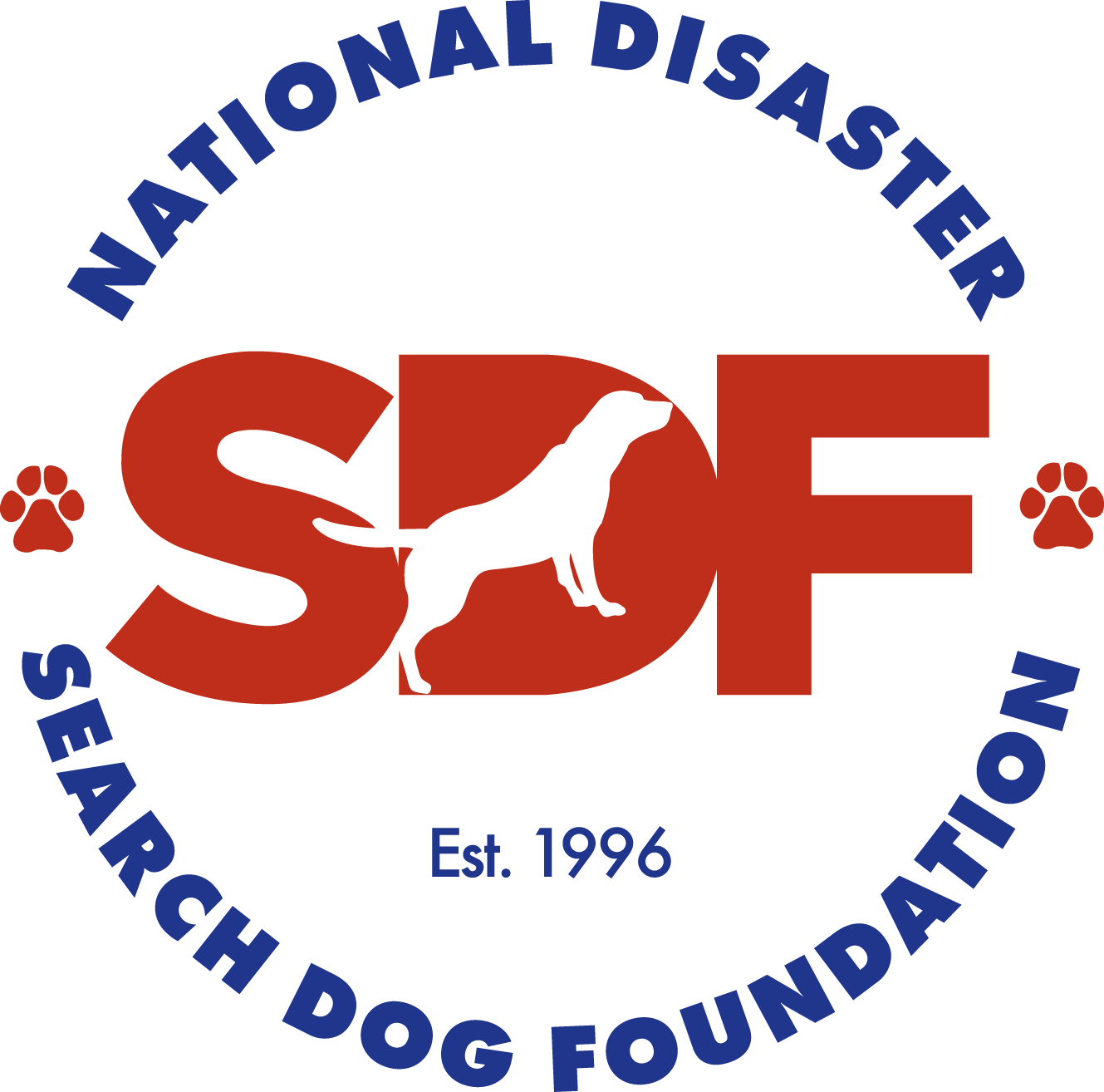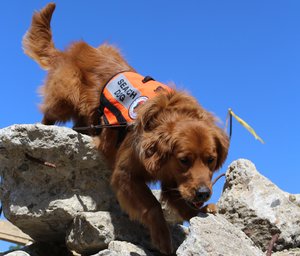Canine Teams in Search of Survivors at the Site of Los Angeles Train Derailment
Report by Su Vodrazka SDF Canine Handler and L.A. Country Sheriff's Department Deputy
On January 26, 2005, at 6:10 a.m., Los Angeles residents awoke to the terrible news of a disaster not far from home. Two Metrolink commuter trains had collided, killing 11 people and injuring over a hundred.
By 6:30 a.m., just twenty minutes after the trains were thrown off their tracks, SDF handler Su Vodrazka and her disaster search dog, Hero, arrived on the scene.
Su Vodrazka's Incident Report:
The collision occurred during a shift change, and I advised my Sergeant that I was joining the group of officers already on their way to the site. Hero is with me at all times so we can respond immediately to any call, and we were equipped and ready to go.
Once at the scene, we saw passengers still being offloaded and triaged. I notified a Battalion Chief that a canine search team was on site ready to assist. We were told to stand by, until a third Battalion Chief told us to begin searching.
As soon as I put on my search gear and helmet and took off Hero's work vest (the one she wears at her day job), her behavior changed immediately—she knew it was time to search!
The train car thrown onto its side had a group of firefighters inside, and I asked that they exit so Hero and I could get to work. While waiting, we searched two cars that were still upright. Searching these was no problem as Hero has been in cars like this many times as part of her day job on the L.A. Metro trains. She cleared them (searched and discovered no live victims) very quickly.
The entrance to the toppled car could only be accessed by ladder. The firefighters nearby offered to lift Hero in, until, very surprised, they saw her ascend the ladder on her own. All of the rescue personnel stepped aside so we could enter. The firefighters on scene were great to work with. They were ready to lift and lower her and were even prepared to fashion some booties for her to protect her feet.
The toppled car posed a much bigger footing issue. It was extremely tough going, as the floor was vertical. In these situations, Hero's job is to make sure that every living person is found and rescued.
Over a forty-minute period she moved carefully over every surface on five different train cars, even in the engine compartment—in case someone was buried there.
Once we completed the search, assured that all survivors had been found, I simulated a live find for Hero by having a deputy hide in one of the upright cars and sending Hero in to search. Hero found the spot and gave her bark alert, signifying she'd found someone buried alive. The "victim" rewarded her by having a great game of "tug toy" with her.
We do this to keep the dogs motivated. Without the simulated search and reward, the search would be like going to work and not getting a paycheck. The tug is the paycheck! She was one happy dog!
Hero did a great job on the deployment—her first! She was completely focused and eager, and knew exactly what to do.


